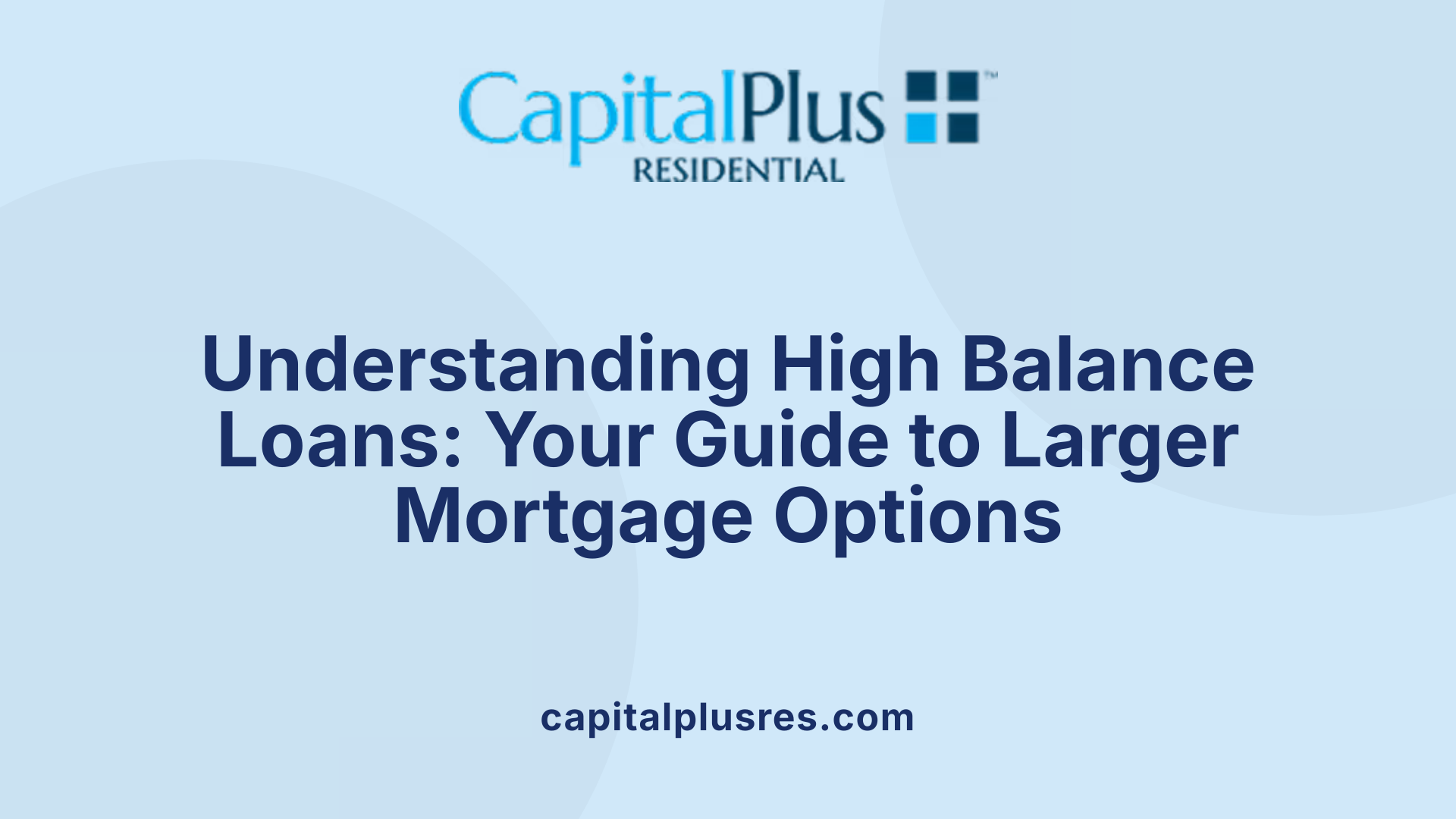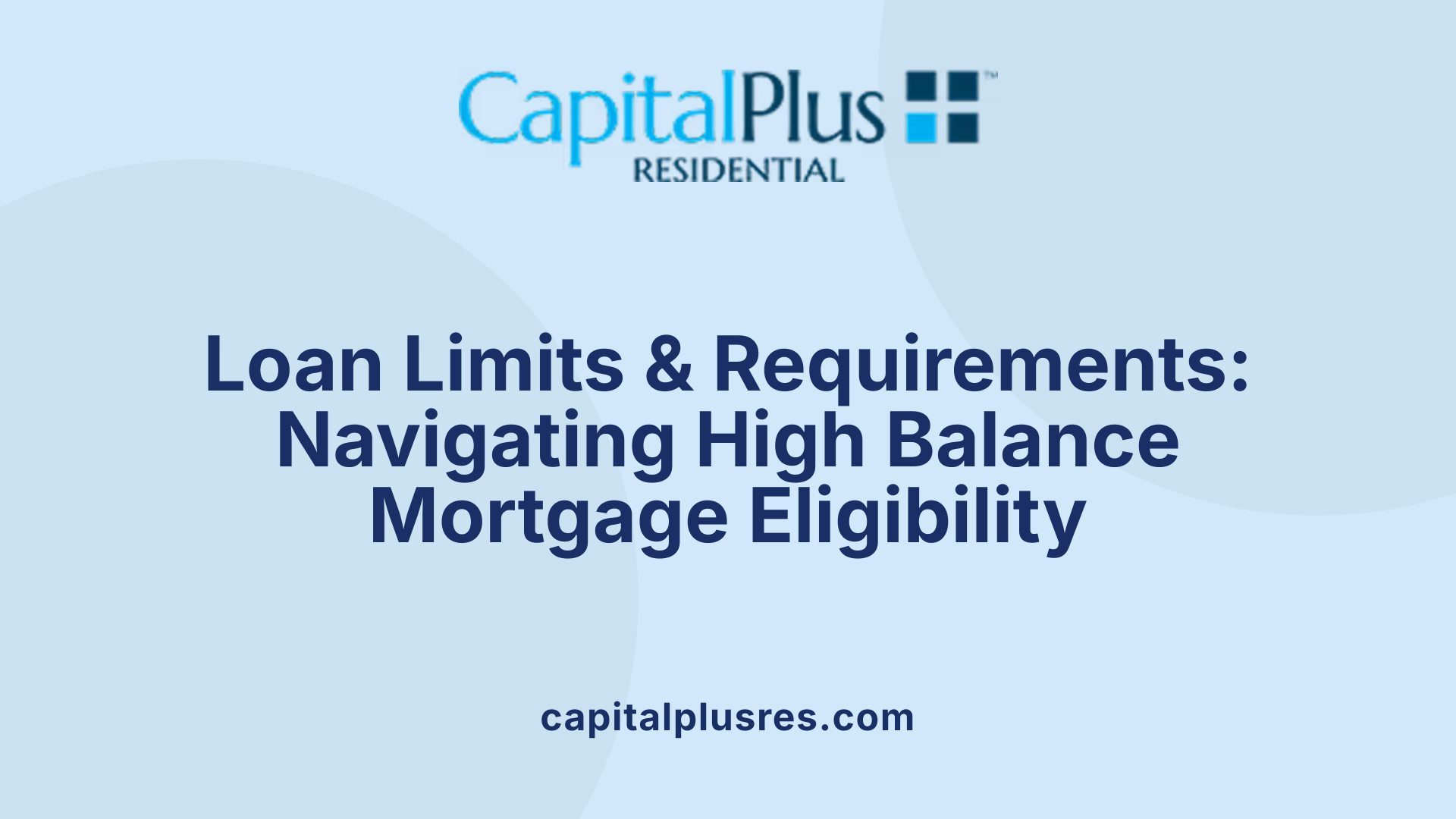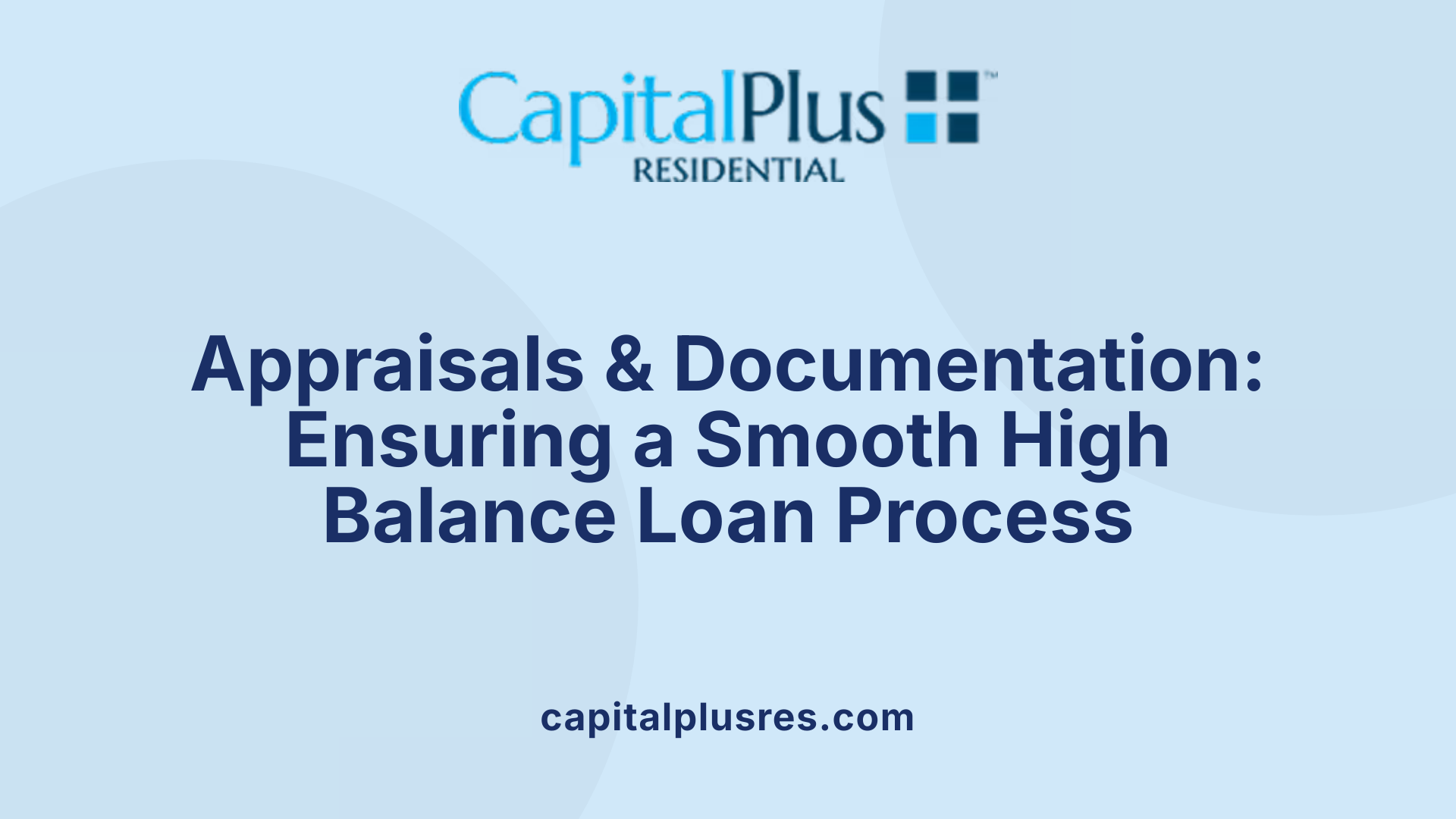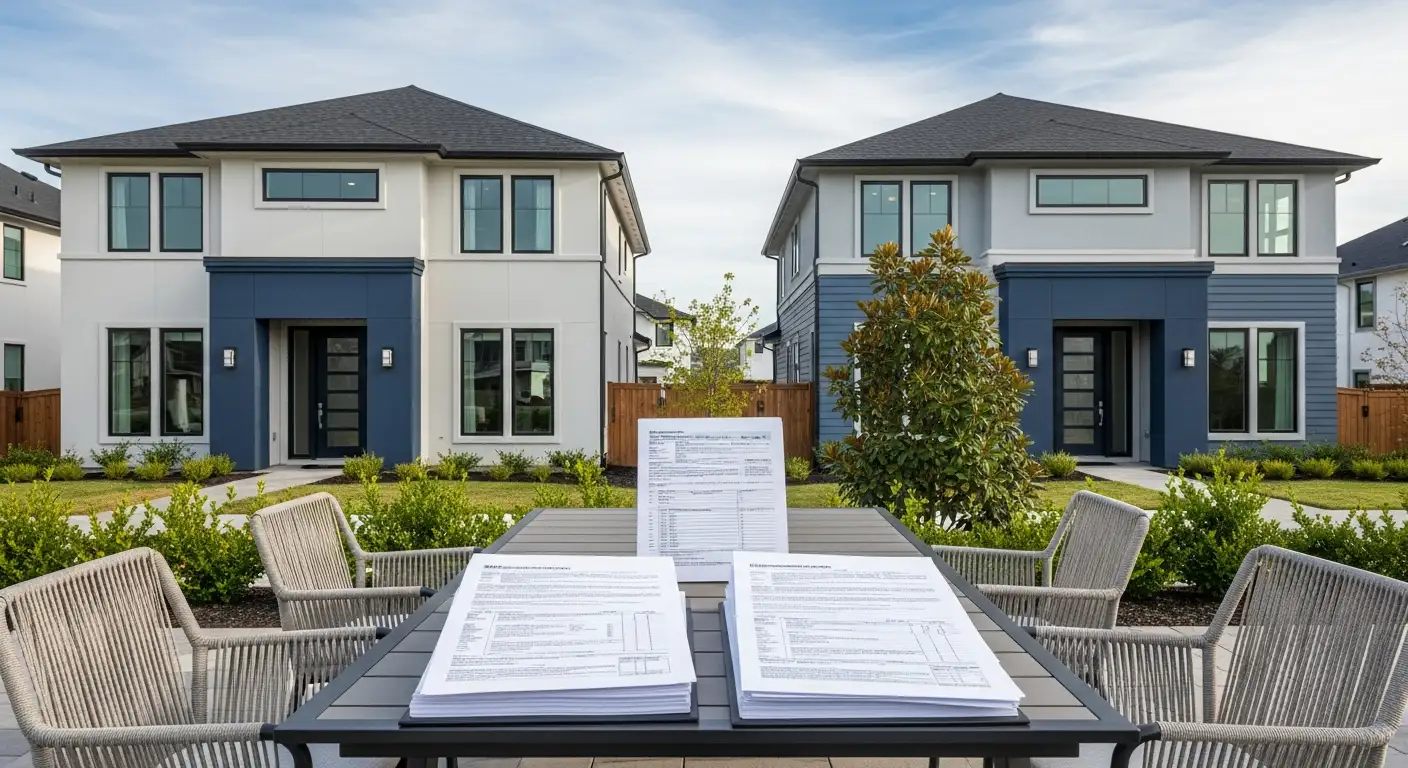Understanding High Balance Loans
In the evolving real estate market, buyers in higher-cost areas need financing solutions that bridge the gap between standard conforming loans and jumbo loans. High balance loans provide such an option, offering elevated loan limits suitable for expensive housing markets without the stringent requirements of jumbo loans. This article explores what high balance loans are, how they function, and when they might be the right choice for homebuyers and refinancers alike.
What Are High Balance Loans and How Do They Differ from Other Mortgage Types?

What is a High Balance Loan?
A high balance loan is a conventional mortgage where the original loan amount exceeds the standard conforming loan limit but stays within the higher limit allowed for high-cost areas as defined by the Federal Housing Finance Agency (FHFA). For example, in the continental U.S., the conforming loan limit for a single-unit dwelling is $510,400, while the high-cost area limit is $765,600.
Conforming Loan Limits vs. High-Cost Area Limits
The FHFA sets conforming loan limits annually based on housing market data. The standard conforming loan limit applies nationwide, but in certain high-cost areas like New Jersey and New York, higher limits are defined to reflect local market prices. These high-cost area limits allow borrowers to access larger loans while still benefiting from conforming loan advantages.
Comparison with Jumbo and Conventional Loans
Unlike jumbo loans, which surpass even the high-cost area limits, high balance loans remain within these limits and are eligible for purchase by government-sponsored enterprises (GSEs) such as Fannie Mae and Freddie Mac. Jumbo loans often require higher credit scores, larger down payments, and more extensive financial documentation due to their higher risk and lack of GSE backing.
Backing by Government-Sponsored Entities
High balance loans are backed by GSEs, providing lenders with increased confidence and often resulting in more favorable loan terms. Jumbo loans do not have this backing, which contributes to stricter qualification requirements and generally higher costs.
Typical Interest Rates and Loan Requirements
Interest rates on high balance loans tend to be somewhat higher than those for standard conforming loans but are usually lower than rates on jumbo loans. Borrowers typically need a valid FICO score with an established credit history, as alternative credit references are not accepted. Loan-to-value (LTV) ratios and other requirements depend on factors such as property type and loan purpose, but high balance loans often have more flexible terms compared to jumbo loans.
Loan Limits, Eligibility, and Credit Requirements for High Balance Loans

What are the loan amount limits for high balance loans?
For single-unit dwellings in the continental U.S., high balance mortgage loans apply when the original loan amount exceeds the conforming loan limit of $510,400 but does not exceed $765,600, which is the high-cost area limit. These limits vary depending on the region and property type, with higher thresholds in designated high-cost counties, such as those in New Jersey and New York.
What credit qualifications are required for high balance loans?
Borrowers must have a valid FICO score based on an established credit history for high balance loans. Alternative credit references are not accepted, emphasizing the need for traditional credit documentation. Minimum credit scores may also depend on factors like loan purpose and whether secondary financing is involved.
What are the rules on loan-to-value (LTV) and combined loan-to-value (CLTV) ratios?
The maximum loan-to-value ratio for high balance loans is generally 90% when mortgage insurance premiums are financed, applying to purchase or rate-term refinance transactions. Both LTV and combined LTV (CLTV) limits vary based on the property type, mortgage term (typically 30 years or less), and loan purpose. Proper adherence to these ratios is crucial for loan approval.
How does mortgage insurance affect financing?
If mortgage insurance is financed as part of the loan, the combined LTV including the mortgage insurance premium cannot exceed 90%. This limitation helps manage lender risk while allowing borrowers to finance mortgage insurance costs within their loan structure.
Are there restrictions on refinancing with high balance loans?
Yes. Properties purchased within the past six months are not eligible for cash-out refinance transactions under high balance loan programs. Additionally, these loans cannot be utilized for expedited refinancing, though cash-out refinancing is permissible for primary residences subject to LTV and total LTV limits. Borrowers should carefully consider these timing rules when planning refinances.
Overall, high balance mortgages bridge the gap between conforming and jumbo loans, with specific loan limits, credit score requirements, and refinancing conditions shaped by regional and property factors. Staying informed about these aspects helps borrowers navigate eligibility successfully.
Benefits and Advantages of High Balance Loans in High-Cost Markets

What are the benefits of choosing a high balance loan?
High balance loans provide access to larger financing amounts that exceed the standard conforming loan limits, making them an attractive option for buyers in high-cost markets where home prices are significantly above average.
Access to larger financing amounts
These loans allow borrowers to finance home purchases or refinancing amounts higher than usual conforming limits but still within the boundaries set for high-cost areas by the FHFA.
Lower interest rates compared to jumbo loans
High balance loans typically carry interest rates lower than those associated with jumbo loans, which are privately funded and involve higher lender risk. This makes high balance loans more affordable for many borrowers.
Flexibility in property types and loan terms
Borrowers can use high balance loans for various properties, including single-family homes and condominiums, with options for purchase, rate-term refinance, and cash-out refinance loans, subject to certain loan-to-value and credit score requirements.
No need for multiple mortgages
Unlike some jumbo borrowers who may split financing into multiple loans, high balance loans enable financing the entire amount under one mortgage, simplifying the payment process.
Reduced overall financing costs
Borrowers can benefit from lower down payment requirements and less stringent qualification criteria compared to jumbo loans, which often require larger down payments and extensive documentation. This can lower upfront and ongoing costs.
| Benefit | Explanation | Impact |
|---|---|---|
| Larger financing amounts | Exceeds conforming limits but within high-cost limits | Enables purchasing homes in expensive markets |
| Competitive interest rates | Generally lower than jumbo loans | Reduces monthly payment burden |
| Loan flexibility | Applies to various property types and refinancing | Offers options tailored to borrower needs |
| Single mortgage financing | No need for piggyback or multiple loans | Simplifies loan management |
| Lower overall costs | Reduced down payment and qualification hurdles | Improves affordability and access |
Appraisal, Underwriting, and Documentation Considerations for High Balance Loans

What Special Appraisal or Underwriting Requirements Apply to High Balance Loans?
High-balance mortgage loans come with distinct appraisal mandates to ensure accurate property valuation. For loans exceeding certain thresholds, lenders require a field review appraisal, which serves as a secondary check to verify the original appraisal's accuracy and reliability.
For condominium units, appraisals must include at least two comparable sales outside the condominium project, providing a broader market context and ensuring the value isn't overstated based solely on internal comps.
Documentation Standards Compared to Jumbo Loans
While jumbo loans often demand extensive documentation like multiple years of tax returns, bank statements, and verification of large cash reserves, high-balance loans generally have somewhat less stringent documentation requirements. However, they still require a valid FICO score based on established credit history; alternative credit references are not permitted.
Mortgage Insurance Premium Financing Limits
When mortgage insurance is financed within these loans, the combined loan-to-value (LTV) ratio, including the mortgage insurance premium, cannot exceed 90% for purchase or rate-term refinance transactions. This limitation helps mitigate lender risk and maintain borrower equity.
Loan-to-Value Ratios and Secondary Financing Conditions
Maximum LTV and total loan-to-value (TLTV) ratios depend on property type, loan term (usually 30 years or less), loan purpose, and whether secondary financing is involved. Secondary financing typically results in stricter LTV limits, requiring thorough underwriting scrutiny.
Properties purchased within the previous six months are generally ineligible for cash-out refinance, ensuring that rapid turnovers don't increase risk.
Underwriting Standards and Credit Score Impact
High-balance loans require minimum credit scores consistent with conventional lending—usually above 700—reflecting the borrower's creditworthiness. Higher scores may yield better interest rates and terms.
These underwriting standards strike a balance between conventional and jumbo loans, offering higher loan limits without demanding the most stringent jumbo criteria.
| Consideration | High-Balance Loans | Jumbo Loans | Notes |
|---|---|---|---|
| Appraisal | Field review appraisal required above thresholds; condo appraisals need external comparables | Multiple appraisals often required | High-balance loans focus on thorough, but moderately flexible appraisals |
| Documentation | Standard credit history; no alternative credit references | Extensive financial documentation, including tax returns | Jumbo loans require more exhaustive documentation |
| Mortgage Insurance Financing | Max LTV including mortgage insurance = 90% | Varies, usually limited or none | MI financing limits help keep borrower equity intact |
| LTV/TLTV Limits | Dependent on property type, loan term, financing | Generally stricter with larger down payments required | LTV restrictions help mitigate lender risk |
| Credit Score Requirements | Minimum typically above 700 | Often higher, 700+ to 740+ | Higher credit scores improve approval odds and loan terms |
This framework ensures that high-balance loans offer robust risk management while facilitating access to financing for borrowers in elevated home price markets.
When to Use High Balance Loans: Practical Scenarios and Market Considerations

When should a borrower consider a high balance loan?
Borrowers should consider high balance mortgage loans when purchasing properties priced above the standard conforming loan limits but still within the defined high-cost area limits set by the FHFA. These loans are particularly suited for high-cost markets where home prices exceed typical loan thresholds but don’t reach jumbo loan levels.
Suitability for buyers in high-cost areas
High balance loans serve as an accessible financing option for buyers in expensive regions such as parts of New Jersey and New York. These loans offer the ability to borrow more than the conventional limit without facing the stricter qualifications or higher interest rates associated with jumbo mortgages. For example, a single-unit home in these areas may have a loan limit of up to $765,600, enabling buyers to finance pricier homes while benefiting from government-sponsored enterprise backing.
Comparison to jumbo loans for high-value home purchases
Unlike jumbo loans that exceed high-balance limits and are privately funded, high balance loans are backed by Fannie Mae and Freddie Mac. This backing typically results in lower interest rates and more lenient qualification standards such as moderate down payments and credit requirements. Jumbo loans require higher credit scores, larger down payments, more reserves, and extensive documentation, making high balance loans a preferable option when loan amounts qualify.
Importance of creditworthiness and financial health
High balance loans require valid FICO scores based on established credit history without alternative credit references. Borrowers should have a strong financial profile, including good credit and the ability to meet loan-to-value limits, often capped at 90% when mortgage insurance is financed. Sound financial health improves loan approval chances and potential interest rate benefits.
Market and location-dependent availability and limits
The availability and loan limits of high balance mortgages vary annually and depend on the property's location. Borrowers must verify current limits per county as these can change with market fluctuations. Staying informed about local conforming and high-cost area loan limits helps borrowers understand their financing options.
Recommendations for working with mortgage professionals
Consulting experienced mortgage professionals is crucial. They can help assess eligibility, clarify loan limits for your area, guide you through the application process, and tailor financing strategies that suit your credit profile and home-buying goals. Pros rely on their expertise to navigate annual adjustments in loan limits and complex appraisal requirements typical for high balance loans.
Making Informed Choices with High Balance Loans
High balance loans serve as a valuable financing solution for borrowers navigating expensive housing markets, offering a middle ground between conventional and jumbo mortgages. By understanding their unique limits, eligibility criteria, and benefits, buyers and refinancers can leverage these loans to secure suitable properties with competitive terms. Engaging knowledgeable mortgage professionals and staying informed about regional loan limits ensures that borrowers can make confident decisions tailored to their financial situations and market conditions.
References
Latest Blog


Get Pre-Approved Today
Start your secure online application now so you can get pre-approved for a mortgage (and close on your dream home) quickly within 5 minutes.









